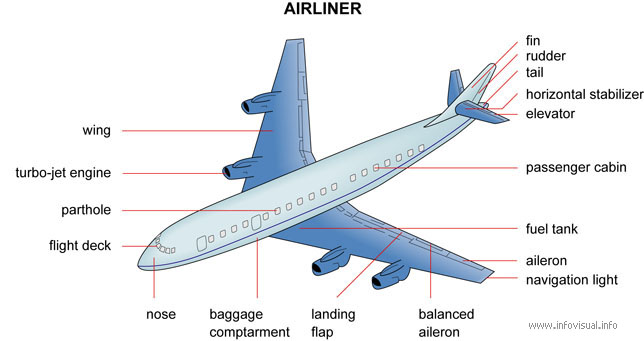|
Airliner: aerial transport apparatus
that is heavier than air and is equipped with wings and engines.
Fin: device that prevents an aircraft from drifting.
Rudder: apparatus used to turn an aircraft.
Tail: tapered rear part of the fuselage.
Horizontal stabilizer: device that automatically corrects errors
and deviations, and stabilizes the aircraft.
Elevator: device used to regulate the altitude of an aircraft.
Passenger cabin: section used aircraft travelers.
Fuel tank: container in which fuel is stored.
Aileron: movable flap on the trailing edge of the wing, operated
by the control stick that allows an aircraft to bank.
Navigation light: rear corner marker light.
Balances aileron: movable auxiliary part on the trailing edge
of the wing that allows an aircraft to bank.
Landing flap: movable part on the trailing edge of the wing of
an aircraft to allow modifications to flight conditions.
Baggage compartment: compartment where baggage is stored.
Nose: front part of an aircraft.
Flight deck: cubicle reserved for the operation of an aircraft.
Porthole: small, round, sealed window.
Turbo-jet engine: gas turbine engine, the turbine of which is
activated by exhaust gases.
Wing: each of two lateral planes of an aircraft, which provide
lift and balance.
|
![]()













